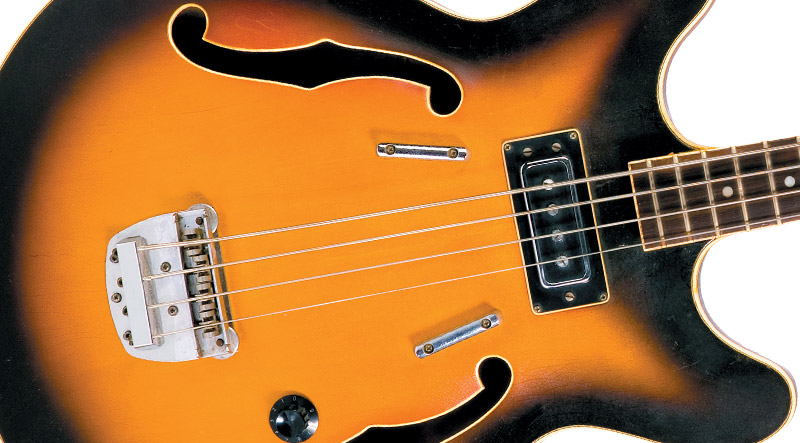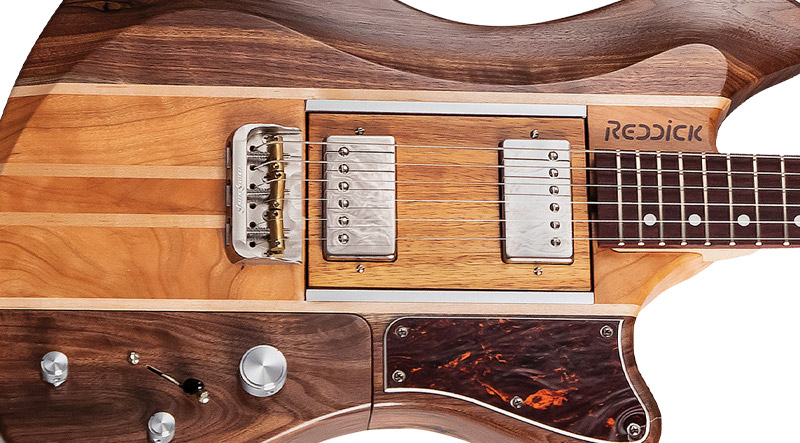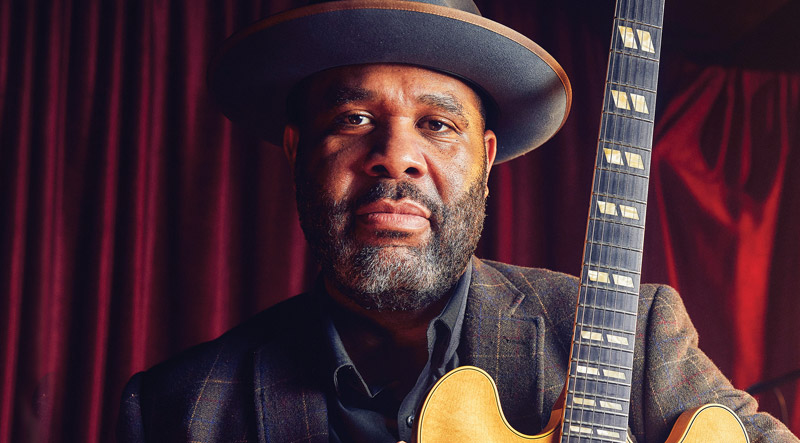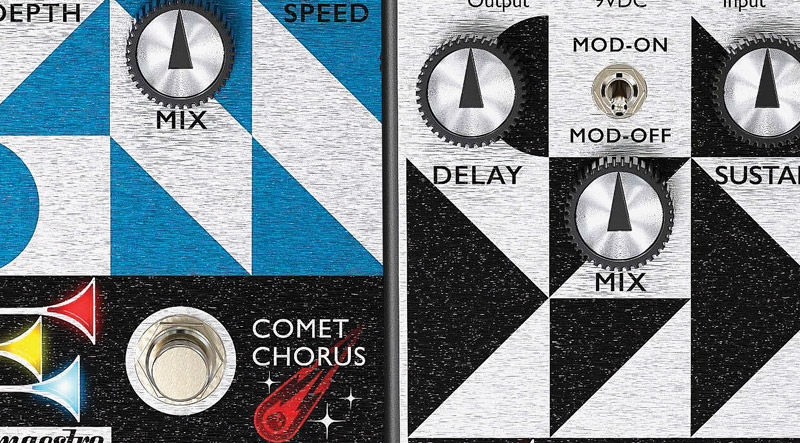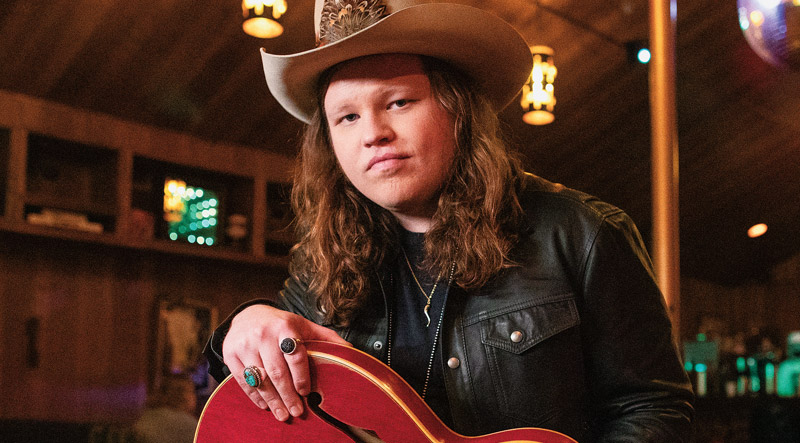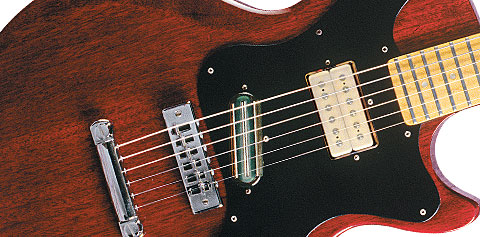
In the early days of the American electric guitar/amplifier industry, Standel was known for building high-quality amplifiers used by the likes of Merle Travis and Joe Maphis. In fact, a true classic now prized among amp aficionados was Standel’s 25L15, which had a J.B. Lansing D-130 speaker.
But one of the more curious/convoluted tales of the ’60s guitar boom involves Standel and its efforts to market guitars carrying its brand. After the inspiration struck in the early ’60s, company founder Bob Crooks approached builders in his home area of Bakersfield, California. Mosrite built a small number of instruments bearing the name prior to Semie Moseley’s affiliation with the Ventures. Then, former Mosrite employee Joe Hall’s Hallmark company built Standel guitars and basses in the mid ’60s. The relationship between Standel and the Bakersfield-area builders was never particularly stable, a fact exemplified by the number of guitars in the vintage market that bear both the Hallmark logo and the Standel “snake S” emblem.

By ’67, a third builder from the area was making Standel instruments. But Crooks, seeking classier guitars and basses to bear the name, hooked up with a builder from across the country – New Jersey’s Harptone, where luthier Sam Koontz was head designer. Harptone acoustic instruments had a headstock profile vaguely reminiscent of a D’Angelico, and a unique arched back. Koontz applied the same features to his designs for Standel.
The ’67 Standel catalog cover had a vibrant orange-and-yellow pattern over a line drawing of a band wearing matching outfits, playing Standel instruments. The text said, “Standel has carefully categorized its Electric Hollow Body Instruments into three basic lines, the Deluxe Artist Line, Deluxe Line, and Standard Line.”
The lineup ran from an 18″ (wide), 31/4″ (deep) archtop jazzbox with a floating pickup and block markers, to the simpler (but still classy) Standard series. Pickups on Harptone-made Standels were DeArmond Dynasonics (which were discontinued by Gretsch a decade earlier). The entire New Jersey-made Standel line had set-neck construction.
The sole bass in the four-page catalog was the model 400, a member of the Standard series. Available in a Sunburst (400S) or Cherry finish (400C), it had the same double-cutaway body dimensions (16″ wide, 13/4″ deep) as the 420 guitar. The semi-hollow body has all-maple construction on the outside (including the aforementioned arched back), and an internal block, a la the Gibson EB-2 it resembles. The neck is one-piece mahogany.
While Standel’s Standard Line was the only series that had pearl-dot position markers (on a rosewood fingerboard), the plethora of cosmetic appointments on the company’s lowest-priced series is still commendable – note the bound headstock, f-holes, and neck, the decorative inlay on the headstock, three-ply binding on the body. Moreover, the headstock shape and body silhouette of Standel thinline electric/acoustic instruments, with slightly-slimmer, rounded double-cutaway horns that flared out a bit more than their Gibson/Epiphone competitors, gave the Harptone-made guitars and basses a distinctive aesthetic.

The Standel 400’s scale was 301/2″ and the 19-fret fingerboard joined the body at the 16th fret. Its zero fret was typical of Standel instruments made by at least two Bakersfield builders.
Of particular note on this bass is its neck profile, which is unique. The owner describes its feel as “hard U/soft V.” Indeed, the sides of the neck are at almost a right angle with the fretboard, but taper to an angle with a slight V feel.
Controls consisted of a Volume and Tone control, and the catalog noted the instrument’s hardware, including its “adjustable compensated roller muted bridge” and “enclosed chrome individual metal machines.”
Koontz estimated that Harptone built only a few hundred Standel-branded instruments. While the line may have been short-lived and the quantities made were miniscule, there were variations from the catalog. For example, the pickup on this 400S is closer to the neck than the DynaSonic on the 400C shown in the catalog, and this one also has a juxtaposed finger-rest and its thumb rest is in different locations.
Crooks, who passed away in 1999, was interviewed by Vintage Guitar in ’94 – the only time it is believed he was interviewed by a guitar magazine. During the discussion, he pulled out his Harptone-made Standel 910S jazzbox and praised its quality and workmanship.
For bass players and collectors, the Standel 400 represents a unique, well-crafted turn on a EB-2-style/short-scale, semi-hollow instrument.

Special thanks to Steve “The Surfin’ Librarian” Soest.
This article originally appeared in VG‘s November 2009 issue. All copyrights are by the author and Vintage Guitar magazine. Unauthorized replication or use is strictly prohibited.

